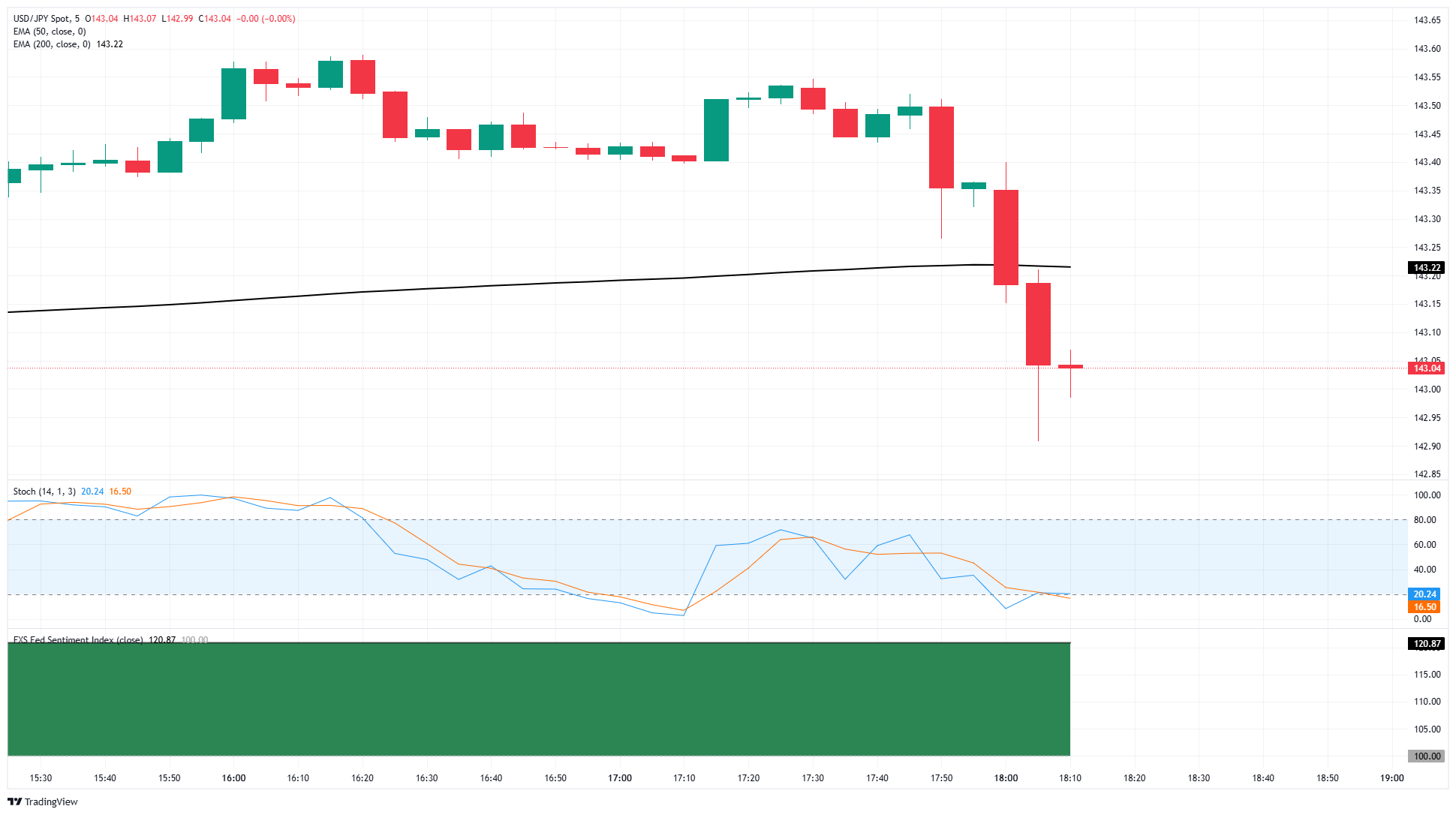USD/JPY dumps after Fed warns of rising economic risks
- USD/JPY fell to the 143.00 region after the Fed held rates steady on Wednesday.
- Market anticipation of a rate cut in July accelerated after Fed warned of rising economic risks.
USD/JPY took a header on Wednesday, falling to 143.00 in intraday trading after the Federal Reserve (Fed) held rates steady at 4.25-4.5%, as many investors had expected. Market bets of an impending pivot by the Fed into a rate-cutting cycle rose after Fed policymakers warned of rising economic risks.
Based on the Fed's recent rate announcement, policymakers indicated that although US employment and economic activity are generally stable, the risks to labor and production have increased. This rise in risk primarily stems from uncertainties related to tariffs and US trade policies. The concerns voiced by Fed officials about economic risks fueled market expectations for potential rate cuts, resulting in an unexpected surge in risk appetite.
Read more Fed news here: Fed leaves policy rate unchanged as expected
More to come...
USD/JPY 5-minute chart

Interest rates FAQs
Interest rates are charged by financial institutions on loans to borrowers and are paid as interest to savers and depositors. They are influenced by base lending rates, which are set by central banks in response to changes in the economy. Central banks normally have a mandate to ensure price stability, which in most cases means targeting a core inflation rate of around 2%. If inflation falls below target the central bank may cut base lending rates, with a view to stimulating lending and boosting the economy. If inflation rises substantially above 2% it normally results in the central bank raising base lending rates in an attempt to lower inflation.
Higher interest rates generally help strengthen a country’s currency as they make it a more attractive place for global investors to park their money.
Higher interest rates overall weigh on the price of Gold because they increase the opportunity cost of holding Gold instead of investing in an interest-bearing asset or placing cash in the bank. If interest rates are high that usually pushes up the price of the US Dollar (USD), and since Gold is priced in Dollars, this has the effect of lowering the price of Gold.
The Fed funds rate is the overnight rate at which US banks lend to each other. It is the oft-quoted headline rate set by the Federal Reserve at its FOMC meetings. It is set as a range, for example 4.75%-5.00%, though the upper limit (in that case 5.00%) is the quoted figure. Market expectations for future Fed funds rate are tracked by the CME FedWatch tool, which shapes how many financial markets behave in anticipation of future Federal Reserve monetary policy decisions.

